Driving in Madeira is not for the faint-hearted. If the narrow roads, hairpin bends and steep inclines don’t freak you out, driving within a hair’s breadth of precipitous drops may do the trick.
It’s not for me.
But the good news is that you can explore Madeira without a car. I know because I have visited the must-see attractions of this beautiful island using its bus services and taking day tours.
Are you ready to find out how to do it?
Leave your driver’s licence at home with my tried and tested 7-day Madeira itinerary using public transport and local tour operators.
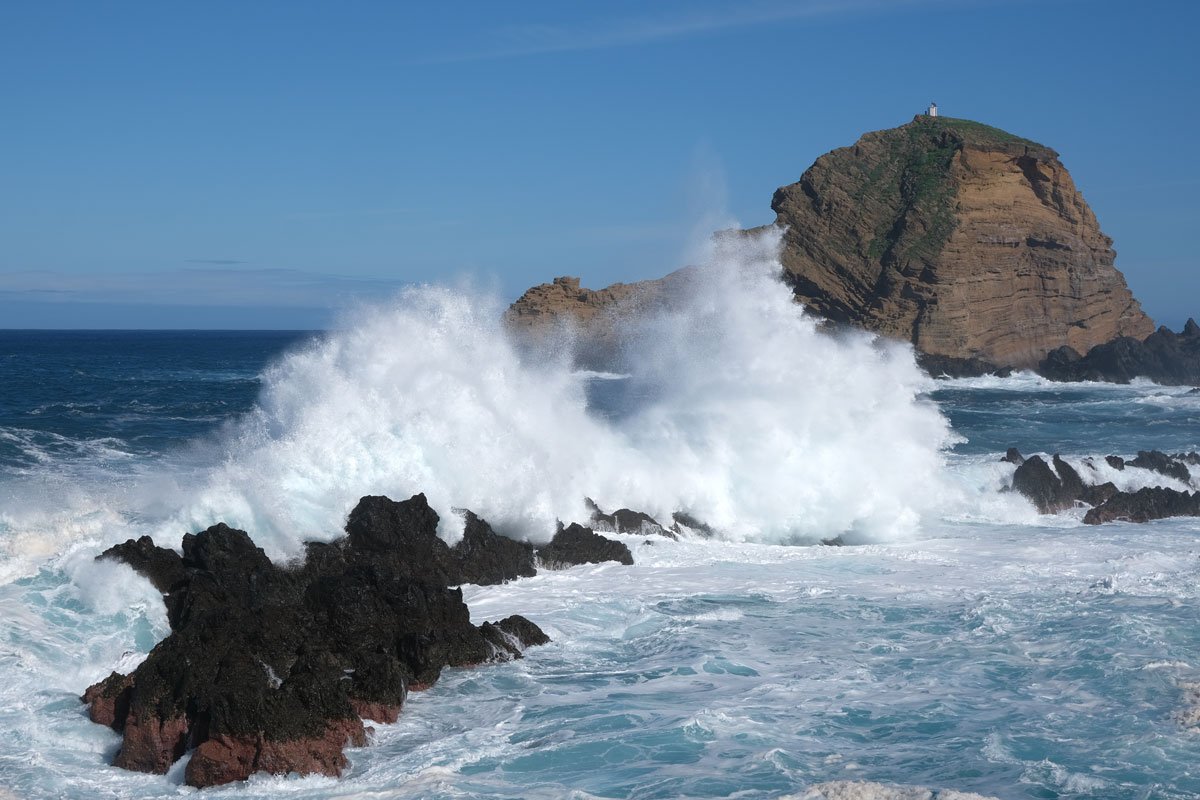
Some articles on this website contain affiliate links. This means that I may earn a small commission if you make a purchase through these links. As an Amazon Associate, I earn from qualifying purchases. Read the full disclosure here.
7-Day Madeira itinerary
DAY 1: Highlights of Funchal
DAY 2: Western Madeira tour
DAY 3: Monte & Botanical Gardens
DAY 4: Eastern Madeira Tour
DAY 5: Putting the fun in Funchal
DAY 6: Valley of the Nuns
DAY 7: Cãmara de Lobos
Recommended day tours
- Walking tour of Funchal
- Western Madeira tour
- Eastern Madeira Tour
- Food and Culture Walking Tour of Funchal
- Nuns’ Valley Half-Day Tour with Cãmara de Lobos
- Whale & Dolphin Watching Cruise
Where to stay
Suggested Madeira 7-Day Itinerary
DAY 1: HIT THE HIGHLIGHTS OF FUNCHAL
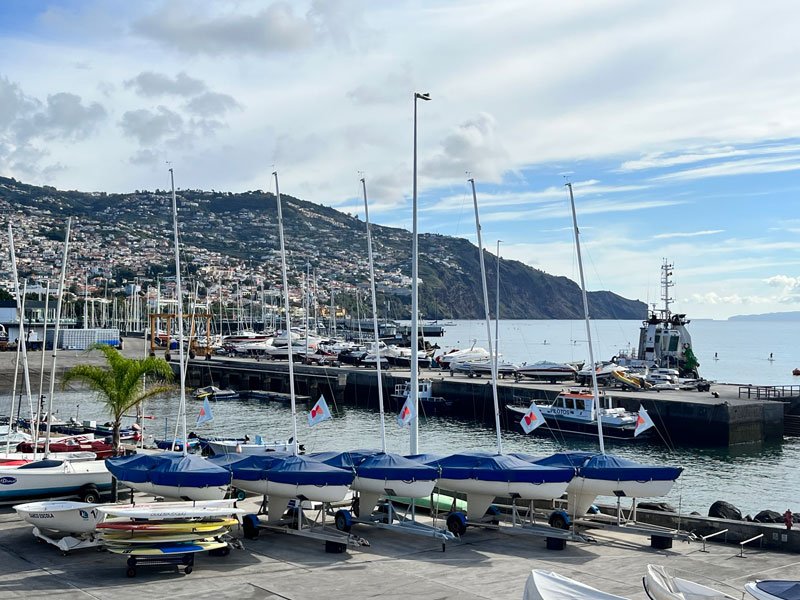
Start your week in Madeira by getting to know your home base, Funchal.
Home to 40% of the island’s 260,000-strong population, the attractions in this attractive harbour city hint at its riches and past glories. Far from being somewhere that has sold its soul to tourism, Funchal is a working city and one in which Madeiran culture is alive and kicking.
From colonial churches to gorgeous gardens, there are lots of things to see in Funchal and its pedestrianised streets, paved with distinctive limestone and basalt mosaics, are a joy to explore.
Joining a walking tour is an excellent way to get your bearings and gain insights into the local way of life. I did this one that was guided by a Polish Erasmus student at the University of Madeira which was well worth the (very) modest cost.
Make Praço do Municipio your first stop. Funchal’s elegant main square is paved in a mosaic of black and white stones and is lined with historic buildings.
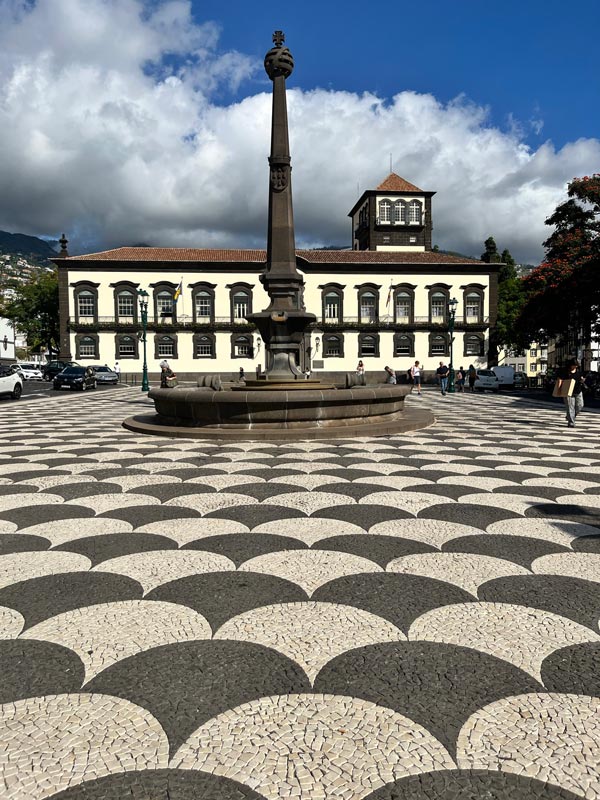
Igreja de São João Evangelistica do Colégio (Collegiate Church) occupies the northern side of the town square. Founded by the Jesuits in 1574, it is richly decorated with gilded wood carvings, paintings and 17th and 18th Century tiles.
Facing the Collegiate Church is the former residence of the bishop of Funchal, which now houses the Museu de Arte Sacra (Museum of Religious Art). It is renowned for its outstanding collection of Flemish paintings and sculptures.
The Cámara Municipal (Town Hall) stands at the eastern edge of Praço do Municipio. Take a peek at the statue of Leda and the Swan in its courtyard.
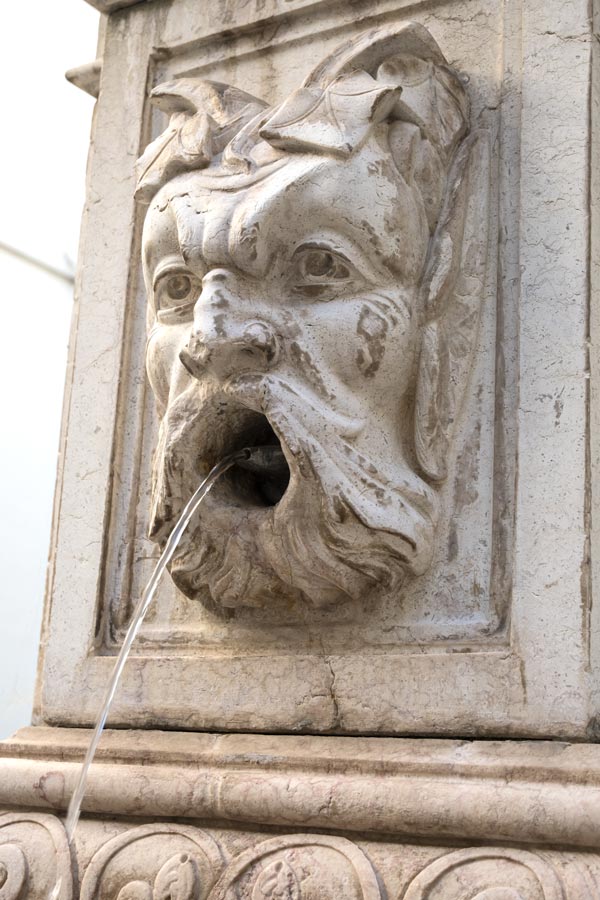
A few minutes walk south of the town square is one of Funchal’s main landmarks, its cathedral or Sé. Built between 1493 and 1517, the Sé is one of the few survivors of the early days of colonisation.
Don’t let its plain exterior fool you. Its lavish interior is a fabulous fusion of Gothic and Moorish architecture and features a recently restored inlaid cedar ceiling, gilded altars and a smattering of azulejos.
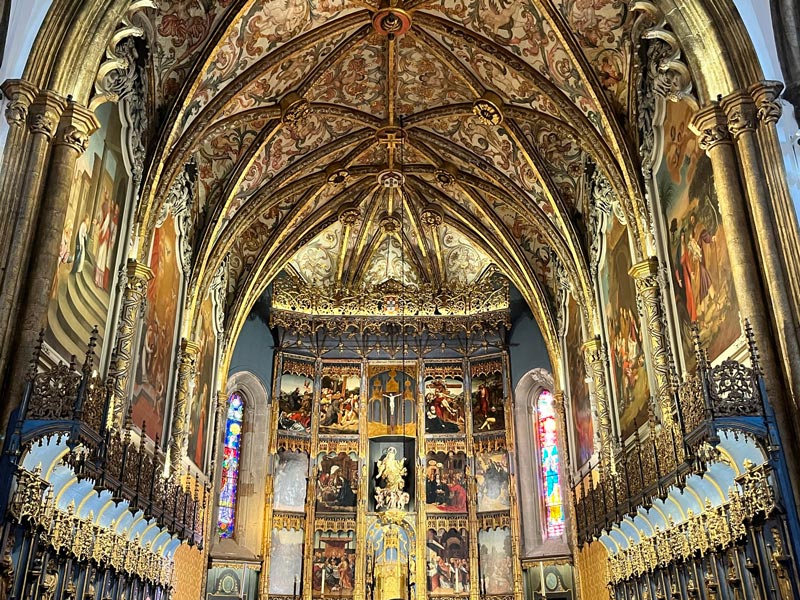
Ten minutes east of the cathedral lies the two-storey Mercado des Lavradores (Workers’ Market) where women in traditional dress sell flowers and there are more types of fruit on display than you can shake a stick at. Visit on a Friday or Saturday when the lower floor is crammed with stalls groaning with produce from across the island.
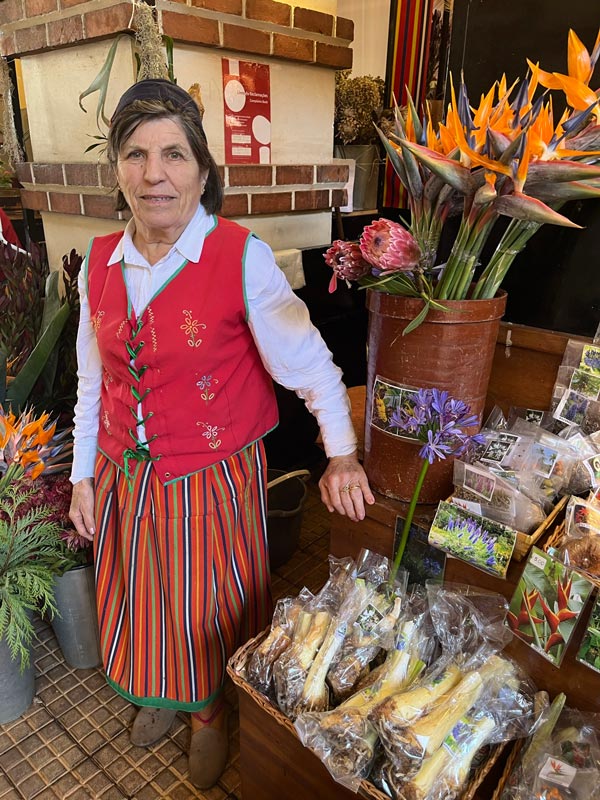
The market marks the western edge of Zona Velha (Funchal Old Town). With its breezy seafront promenade and cable car station, this is tourist central, although not in a bad way.
This former fishermen’s quarter was once a no-go area, run-down and frequented by drug pushers and ladies of the night. The transformation of Funchal Old Town was thanks to the Painted Doors Project.
In 2010, photographer José Maria Zyberchem invited artists to paint the doors along Rua de Santa Maria and the neighbouring streets. Today, around 200 doors are painted.
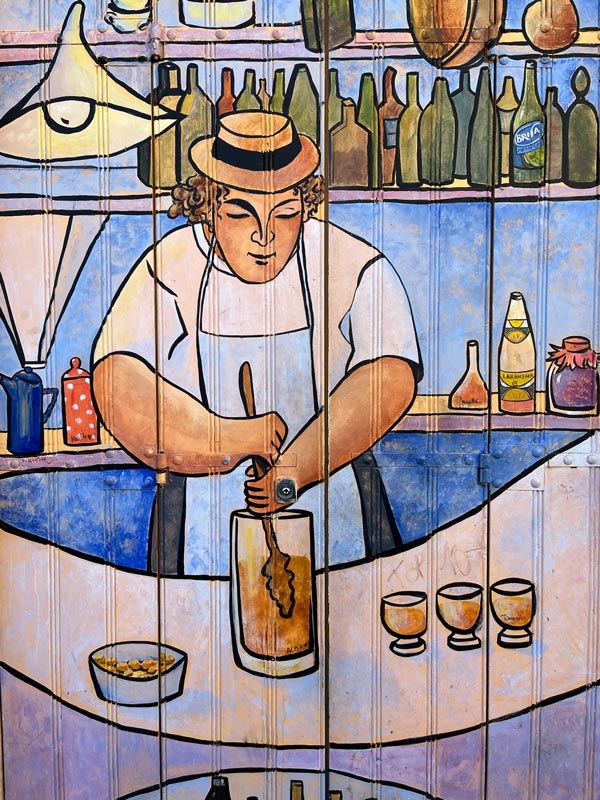
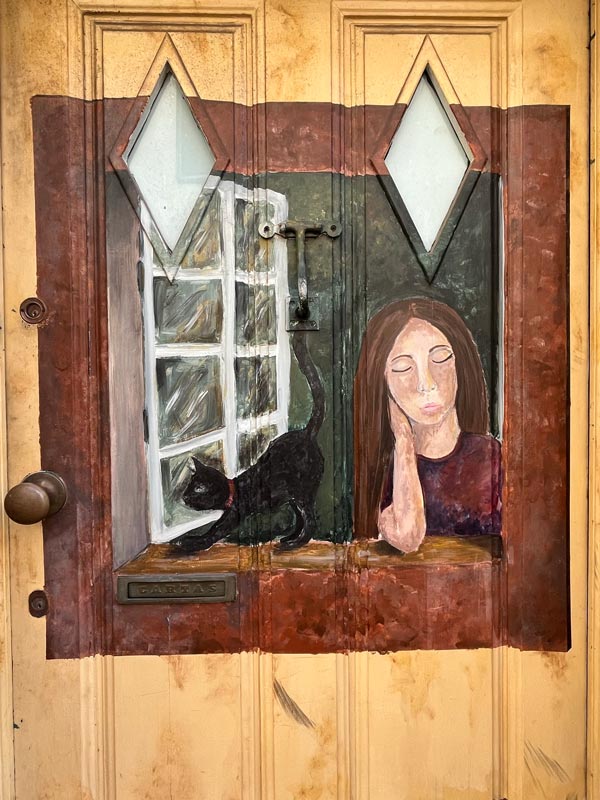
Stroll around Old Town Funchal and pick a favourite door. As the sun sets, this is a great place to finish your first day in Madeira with a glass of poncha – a fruity cocktail made with local sugarcane liqueur – and a fish meal.
DAY 2: WESTERN MADEIRA TOUR
As lovely as Funchal is, Madeira’s real treasures lie in its rural interior. From the terraces of banana plants clinging to the terraces in the balmy south of the island to its windswept mountain peaks and emerald valleys, its scenery is nothing short of rapturous.
Joining a group tour is by far the easiest way to visit the west of Madeira. Although some of the destinations we visited on the tour are doable by bus, you would not be able to see them all in one day or be able to access the viewpoints.
Trust me; I checked before I handed over my modest amount of Euros. Here’s what you can expect to see.
>>> CLICK HERE TO FIND OUT MORE ABOUT THIS TOUR OF WESTERN MADEIRA
Cabo Girão
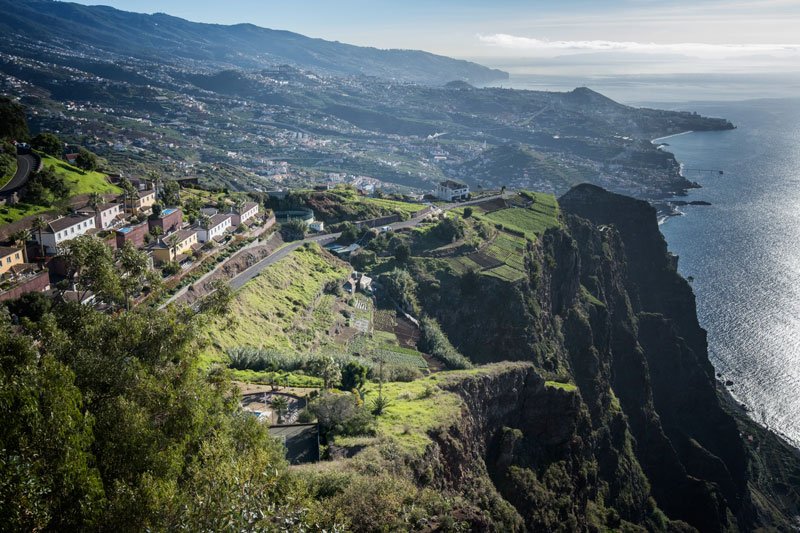
Towering 589 meters above the Atlantic, is the 3rd highest cliff in Europe. From east to west, the views are sensational.
Step onto the Skywalk if you dare. Through this reinforced glass platform, there is nothing between you and the ocean 1,900 feet below.
Ribeira Brava
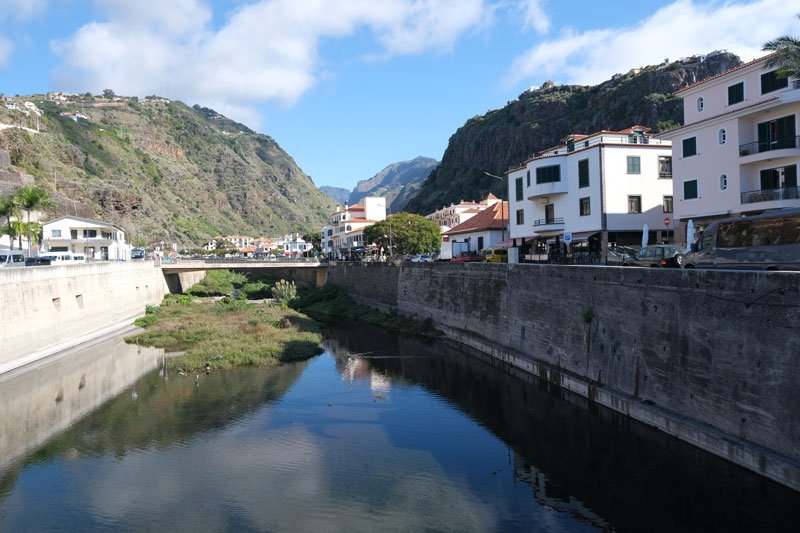
This town’s name – “Wild River” – is at odds with its sleepy nature, and outside of winter, the river is less gushing, more tinkling.
São Bento (St. Benedict’s Church) is the main sight in town. This 16th Century church has lavish gilded and carved woodwork, light-catching Bohemian chandeliers and a handsome façade.
Encumeada viewpoint
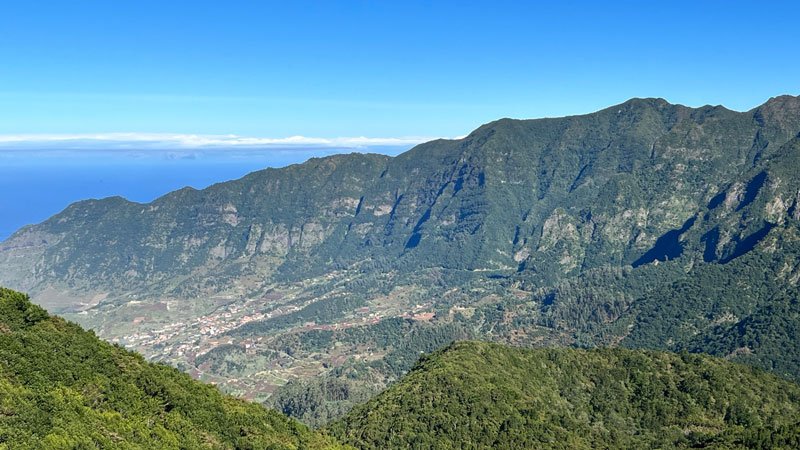
Driving through the ravishing Serra de Agua (Forest of Water), the next stop on this west coast tour was this popular viewpoint, at an elevation of a touch over 1,000 metres. Set on a ridge that runs through the island’s centre, the Ribeira Brava valley lies to the south and the São Vicente valley to the north.

Lombo do Mouro viewpoint
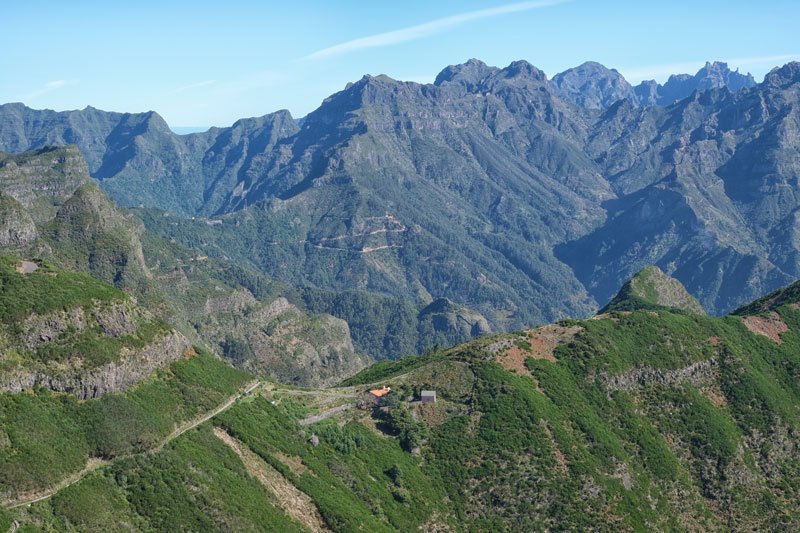
This viewpoint at almost 1400 metres is often obscured by cloud, leaving only a few curious cows visible. Not so on the day that I visited when laurel forests stretched out as far as the eye could see under a light canopy of clouds blown in by the trade winds.
Paúl de Serra
And we continued to climb.
Sitting at an average altitude of 1500 meters, Paúl da Serra is Madeira’s largest plateau. It is home to a number of wandering cows and is the starting point of the popular 25 Fountains levada walk.
Forest of the Laurels
The UNESCO-listed Laurisilva of Madeira is home to many subspecies of laurel, unique to the island, the Azores, the Canary Islands and, to a lesser extent, Cape Verde. This forest covers 20% of the island, mainly in this area of the north coast, and is the largest preserved area of Laurisilva in the world.
Porto Moniz
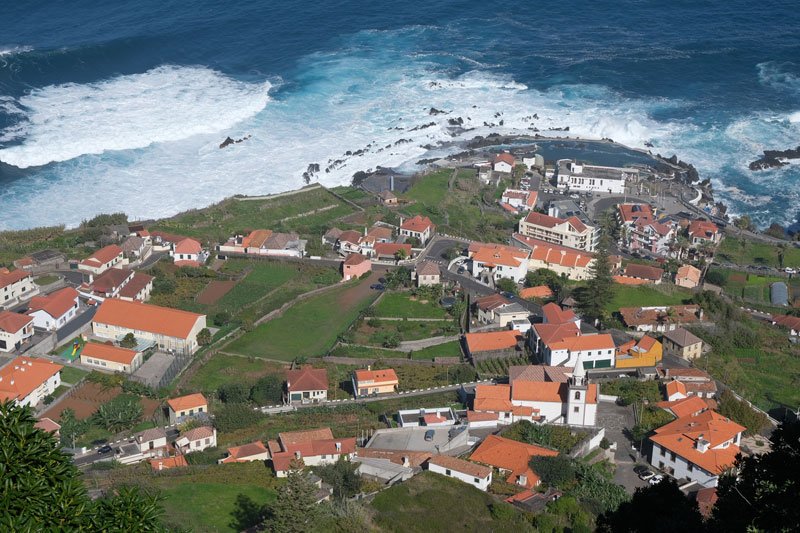
This town of 20,000 souls sitting on the extreme north-western tip of Madeira is famous for its natural volcanic swimming pools. Thousands of years ago, a tongue of volcanic lava flowed into the Atlantic and was carved and cooled by the sea into a series of natural pools.
There are two lava pool areas. They are both free to use.
The larger pool is the most pleasant and has a bar and changing areas. However, this area is closed when the waves are at their most vigorous, as was the case when we visited.
A smaller pool area to the east of the large pool is always open.
Véu da Noiva
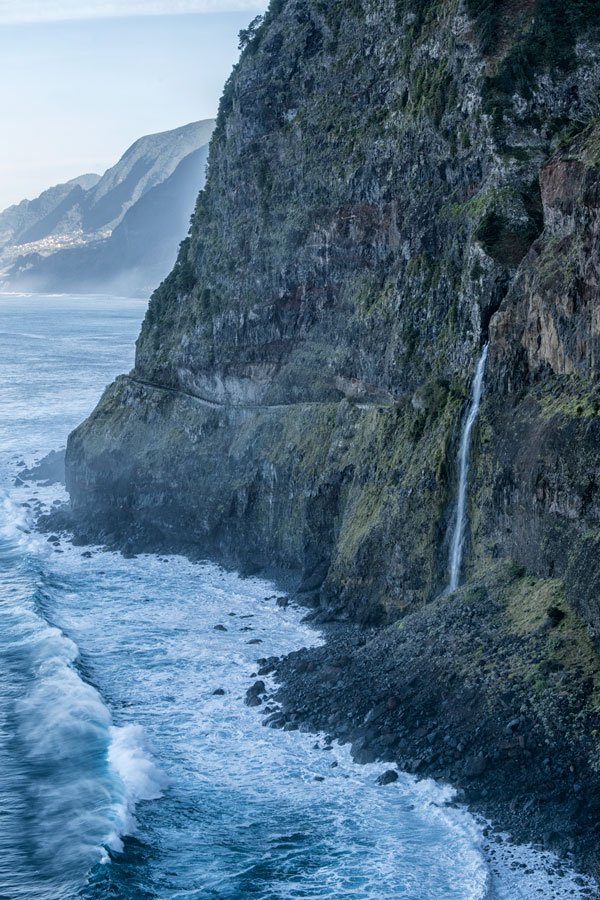
The last viewpoint of the day. To the east is a waterfall cascading into the ocean; to the west is the town of Seixal.
DAY 3: CABLE CARS, GLORIOUS GARDENS AND (MAYBE) A TOBOGGAN
On the slopes just northeast of Funchal are two of Madeira’s most beautiful gardens: Jardim Botãnico (Botanical Garden) and Monte Palace Madeira Tropical Garden in the hilltop town of Monte.
Monte Palace Madeira Tropical Garden
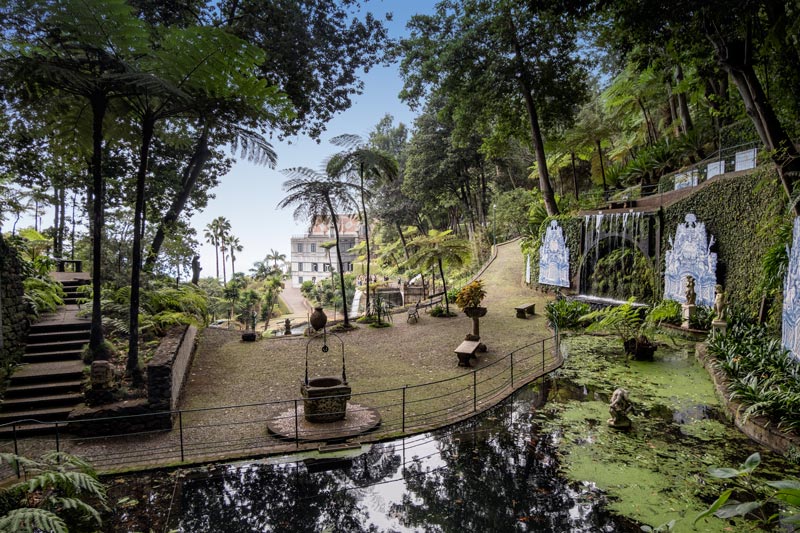
Visiting the Monte Palace Tropical Garden should be high on your Madeira bucket list. Occupying an area of 70,000 square metres, it is home to about 100,000 plant species from across the globe. Water gushes, fountains cascade and the resident peacocks strut their stuff.
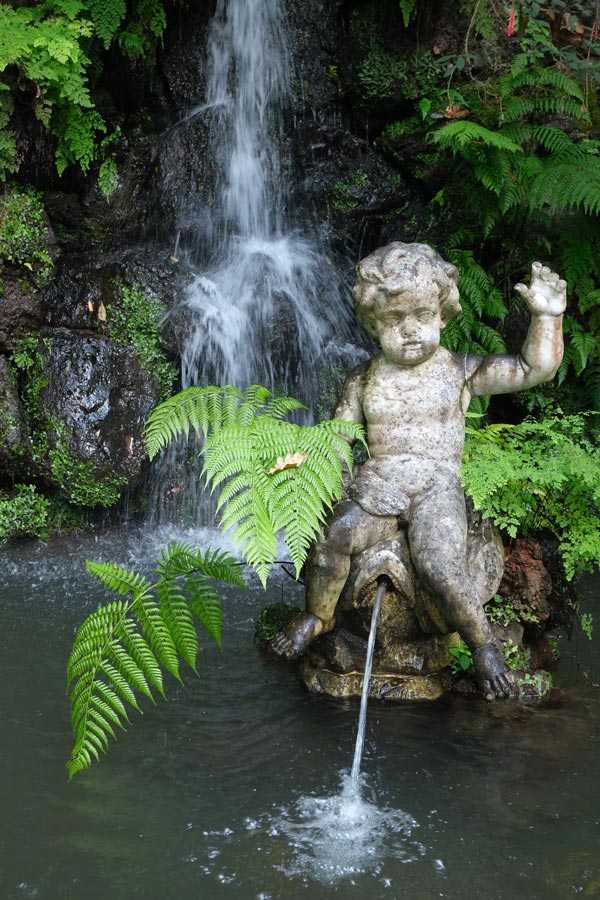
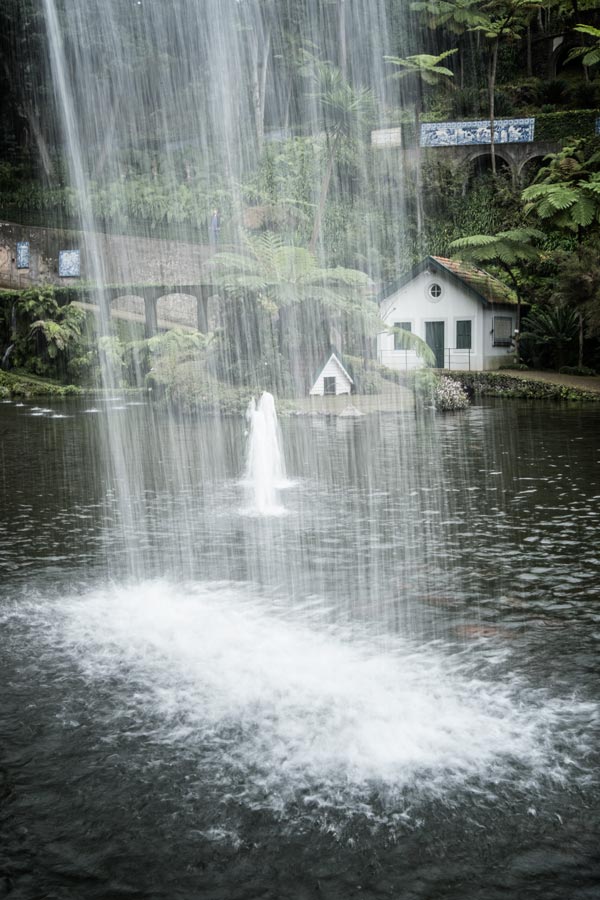
But is so much more than a collection of exotic plants and trees.
There is a wonderful collection of Zimbabwean stone sculptures, an exhibition of minerals and precious stones, and tiles and wall panels dating from the 16th to the 21st Centuries. I love oriental gardens and there are two here, complete with Buddhas, pagodas, koi carp, wooden sculptures of Samurai solemnly standing in a line and stone lanterns.
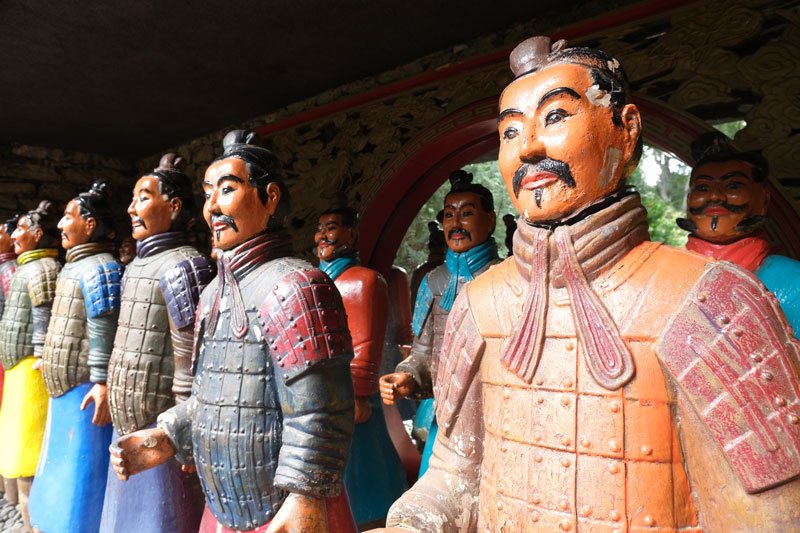
Address: Caminho das Babosas, 4A (Entrada Junto ao Teleférico), Caminho das Babosas, 4 (Entrada Norte) and Caminho do Monte, 174 (Entrada Este – closed at weekends) 9050-288 Funchal
Opening hours: Open daily except for 25th December from 9.30 am until 6 pm
Admission fee applies. Check current prices and opening hours here.
Jardim Botãnico
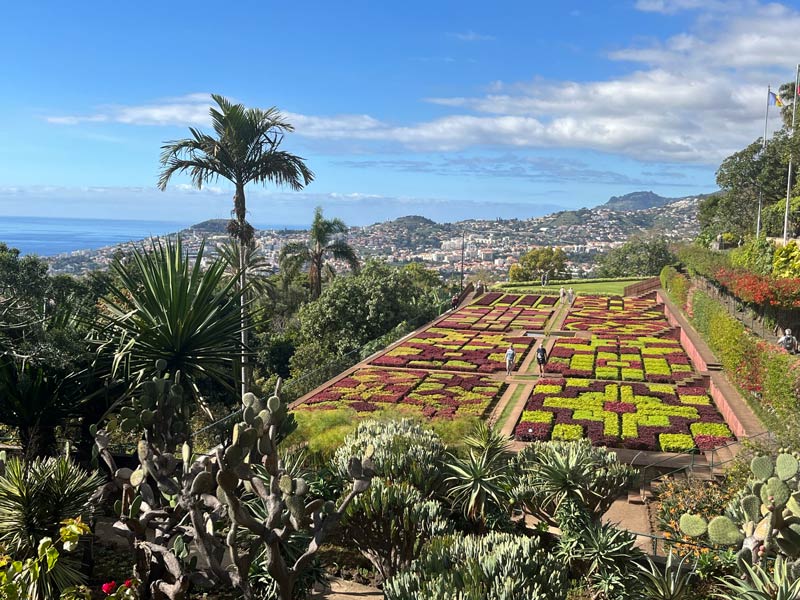
Half the size of Monte Palace Tropical Garden, Jardim Botãnico is located in the grounds of a quinta (villa) that once belonged to the Reid family (of Reid Palace Hotel in Funchal). This glorious outdoor space houses around 3,000 exotic species from all continents.
There are four main areas to visit across its terraces (like Monte Palace Tropical Garden, expect to do a lot of walking up and down):
- Indigenous and endemic plants – from Madeira and other Atlantic islands, including the Azores, Canaries and Cape Verde.
- Arboretum – trees from across the globe
- Succulents
- Tropical/Cultivated/Aromatic/Medicinal – I spotted sugar cane, coffee bean pods and avocado trees as well as other tropical and subtropical trees
Vibrant Birds of Paradise – Madeira’s national flower – form a curtain through which there is a stunning view of Funchal. I loved the geometric patterns created by purple and green acanthus in the formal garden.
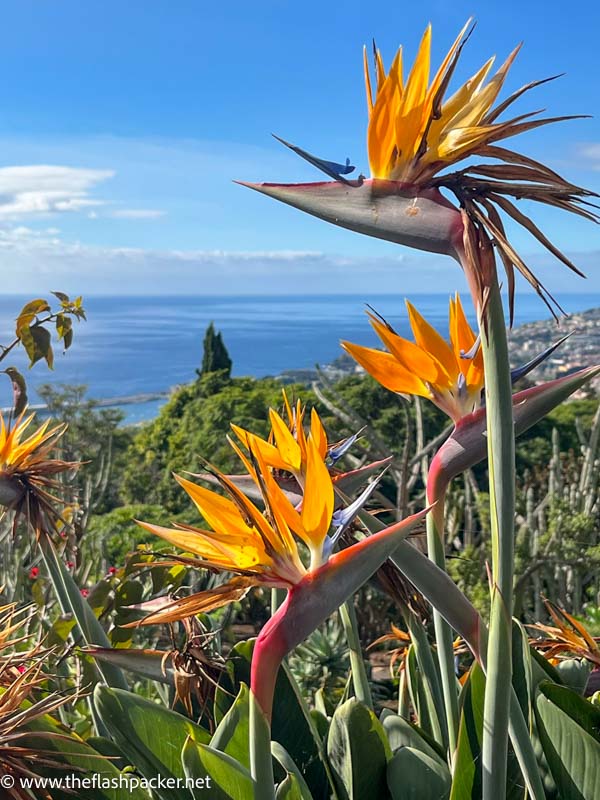
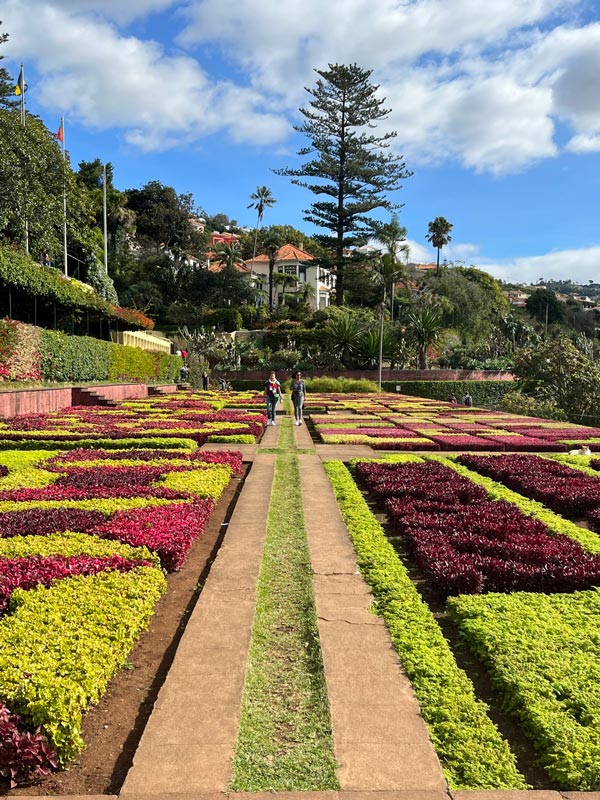
But there is not just flora. Lizards scamper, butterflies flutter and terrapins sunbathe by the pond.
There is also a small self-service café on site.
Address: Caminho do Meio, Bom Sucesso, Funchal
Opening hours: Open daily except for 25th December from 9 am until 6 pm
Admission fee applies. Check current prices and opening hours here.
How to get to Jardim Botãnico and Monte Palace Tropical Garden
By cable car
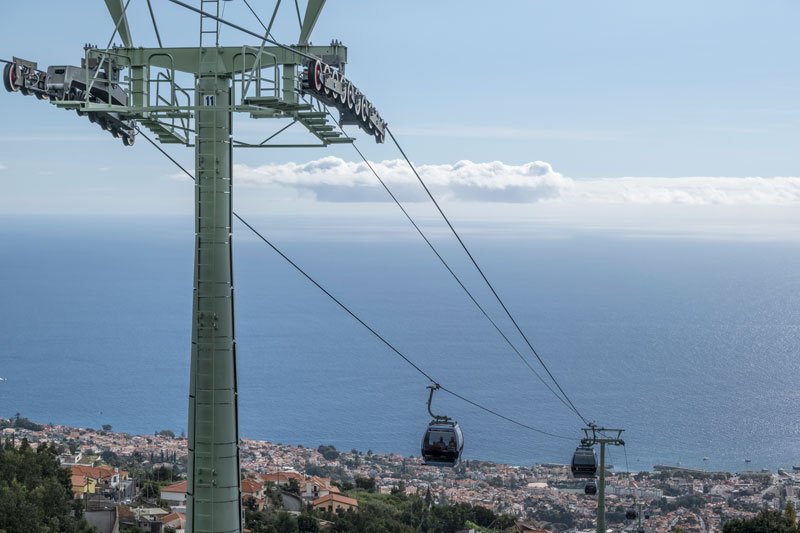
Gliding high above the hills in a cable car is far and away the most scenic way of getting from Funchal to both of these gardens.
From the base station next to Funchal’s seafront promenade, take the Teleférico do Funchal (Madeira Cable Car) to Monte Palace Tropical Garden. It’s a wonderful 20-minute ride and you can check current prices and opening hours here.
From Monte, catch a second cable car – Teleférico do Jardim Botãnico – to the Botanical Garden.
Before you buy a two-way ticket, you will need to decide whether you will take one of the world’s most unique forms of transport for the return journey.
>>> Buy your cable car ticket in advance here.
Monte’s famous wicker toboggans
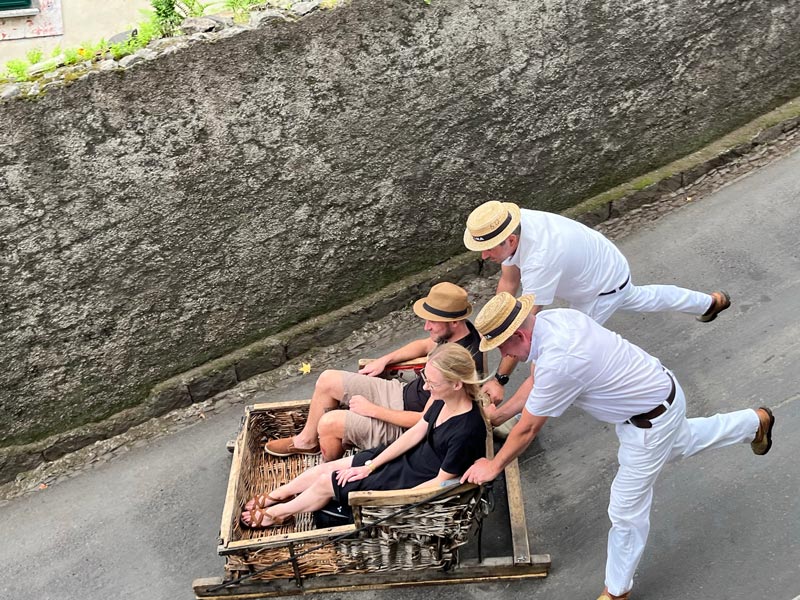
Monte has downhill toboggan boy racers who will happily push you down the slippery slope towards Funchal.
At the beginning of the 19th Century, these wicker toboggans were used to carry freight down the steep 5km hill between Monte and Funchal. Today’s ride covers 2km of the original route.
Each of these toboggans is controlled by two carreiros, wearing traditional straw boaters, the rubber soles of their boots acting as brakes.
From the endpoint, it’s an easy walk downhill back to Funchal.
This is not a cheap way to go. In 2024, the Monte to Funchal toboggan ride cost €27.50 for one person and €35 / €52.50 for 2 / 3 people. You can check the current prices here.
Buy your ticket from the booth and join the line to wait for the next available ride. When I visited the queue for the toboggan ride was epic.
The wicker toboggan service does not operate on Sundays.
By bus
Buses 20, 21, 22 and 48 serve Monte Palace Tropical Garden.
To get to the Botanical Garden, catch bus 31 or 31a. You can check routes and fares here.
DAY 4: EASTERN MADEIRA TOUR
You are now halfway through your 7-day Madeira itinerary and it’s time to leave Funchal again. I explored the east of the island on this superb tour that includes the highest peak in Madeira accessible by car and its famous traditional houses.
>>> CLICK HERE TO FIND OUT MORE ABOUT THIS TOUR OF EASTERN MADEIRA
Terreiro da Luta
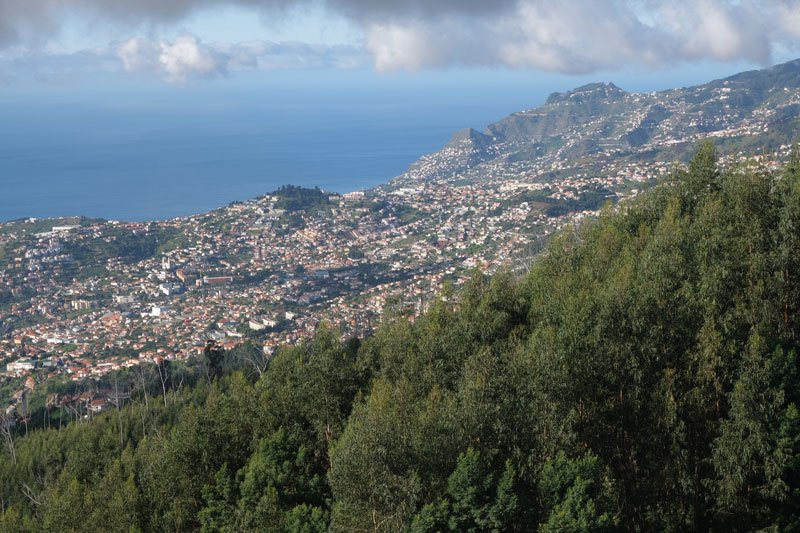
From this viewpoint, an enormous statue of Mary and the infant Jesus (Our Lady of Peace sanctuary) blesses the good citizens of Funchal below. Until 1943, a cog railway connected this area north of Monte with Funchal.
Continuing north from here, through the Ecological Park of Funchal and Poiso at 1412 meters, the dense clouds suddenly lifted to reveal blue skies (a common occurrence, our guide told us). Blueberry bushes and gorse clung to the sides of the road.
Pico do Arieiro
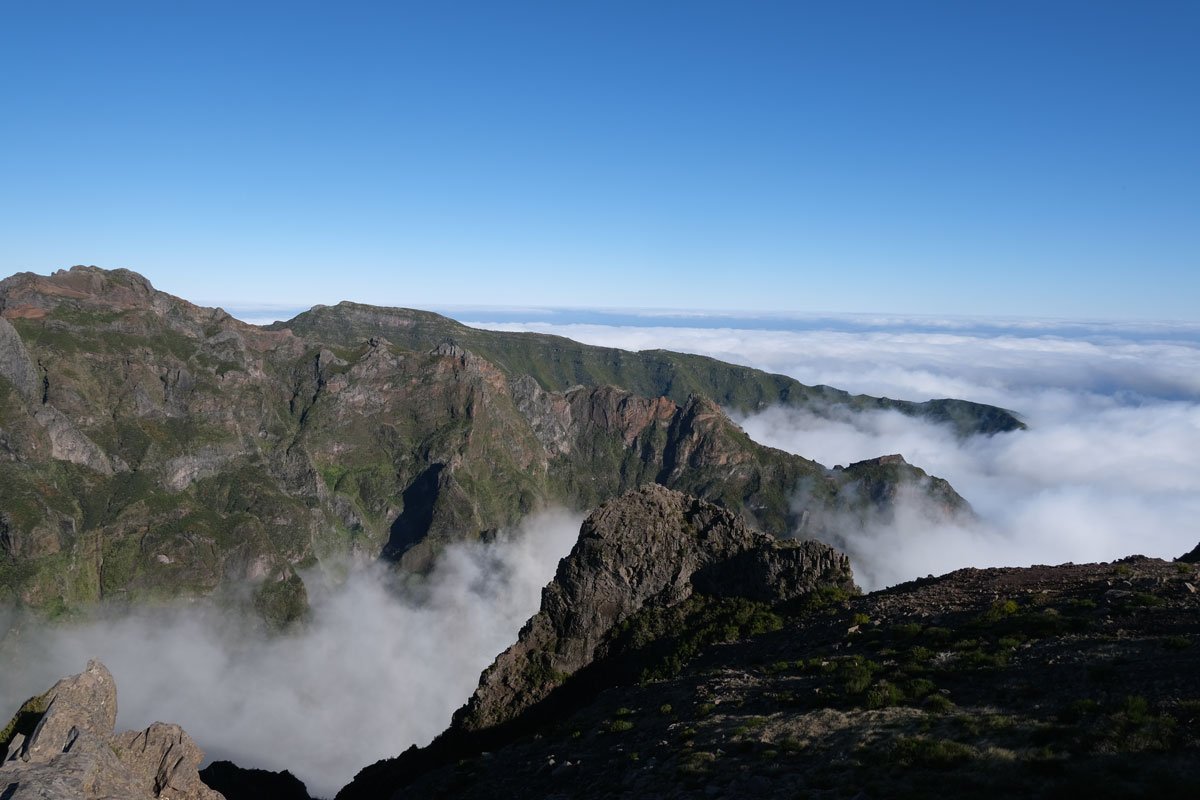
There are some sights that you will never forget. For me, the views from Pico do Arieiro rank amongst the best of these.
At 1818 metres, Pico do Arieiro is the 3rd highest mountain in Madeira but the only one that doesn’t involve a hike. From its windswept viewpoint, there is a 360-degree panorama, featuring plunging canyon walls and frozen lava that are kissed by an ethereal sea of clouds.
Pico do Arieiro marks the start of the famous hiking route to Pico Ruivo and is also one of the most popular sunrise spots on the island.
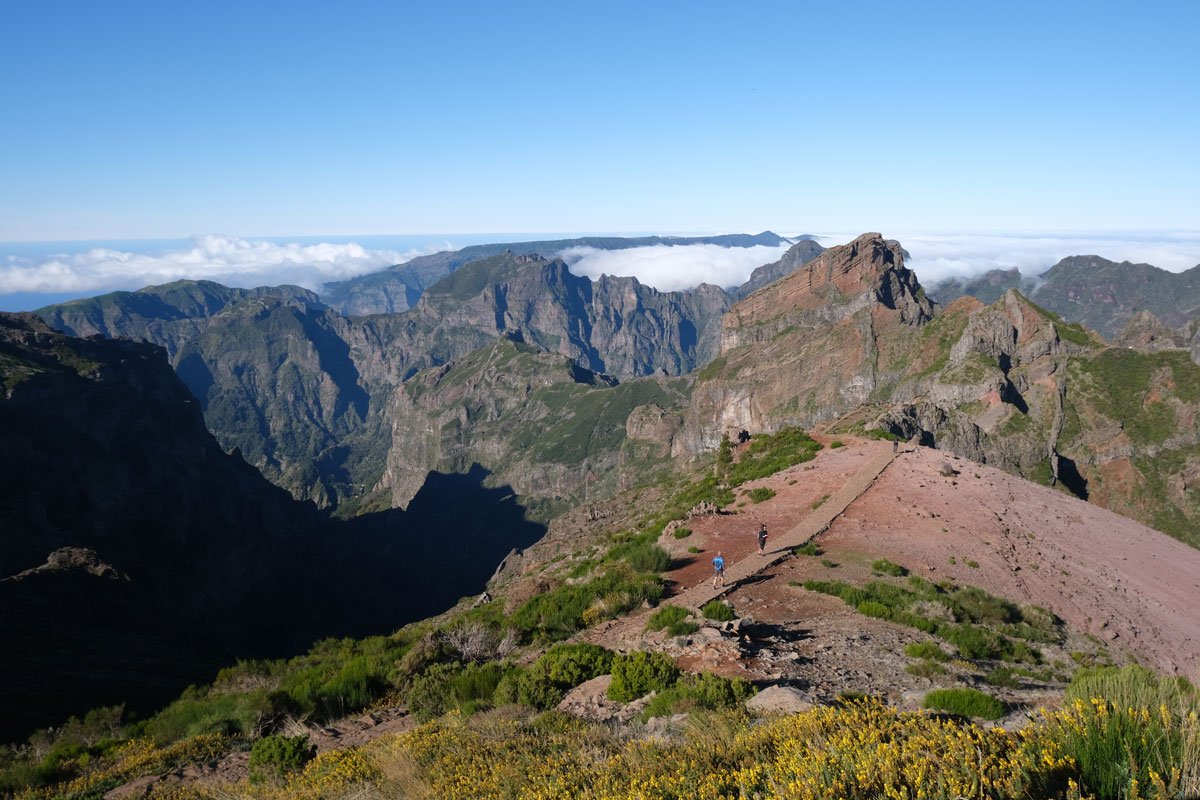
Ribeiro Frio
Driving through an avenue of eucalyptus trees as tall as cathedral spires, we reach sleepy Ribeiro Frio. This is home to a well-known trout farm – you have to pay to enter but can take a peek at it from the roadside – and is the start of two popular levada walks.
The shorter one is an easy one-mile there-and-back stroll (PR11) to a panoramic viewpoint known as the Balcöes (balconies). Starting on the opposite side of the road, a longer walk (PR10) is one of Madeira’s most popular.
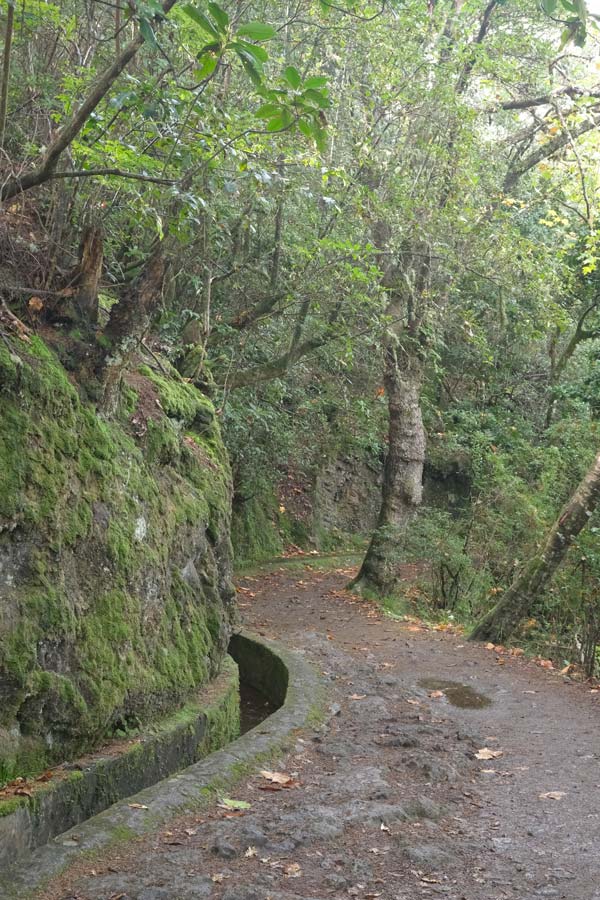
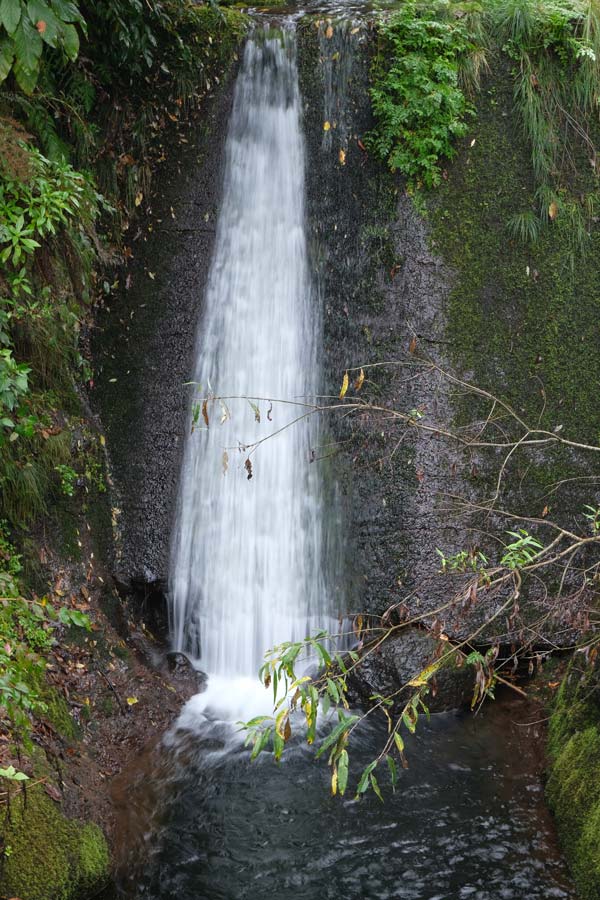
Santana
Santana is home to reconstructions of palheiros, a traditional form of housing unique to this side of the island. These white stucco A-framed buildings feature a bright red front door, red and blue window frames with shutters and a thatched roof.
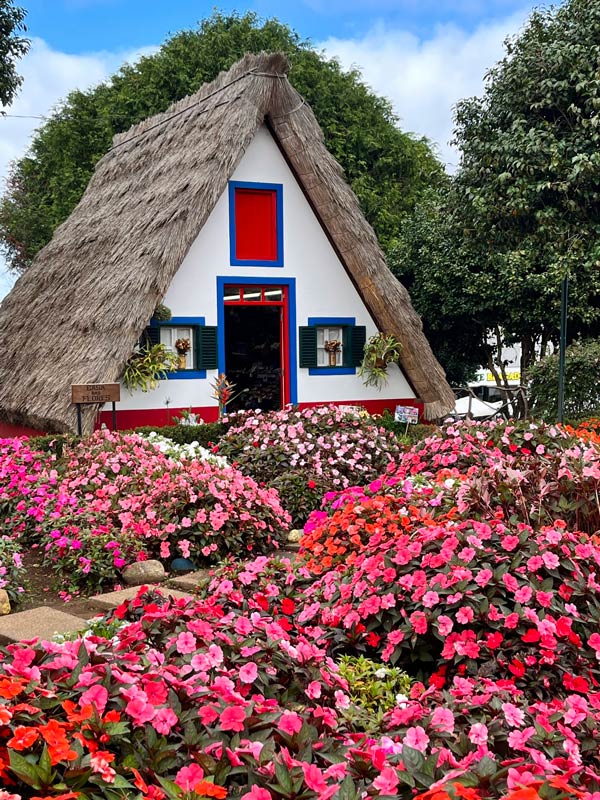
There are five of these structures clustered around Santana’s town hall. One of these is the Tourist Information Office; the remainder are shops.
An additional palheiro in the grounds of O Colmo restaurant has a reconstructed interior that you can visit for free.
Pico do Facho
Panoramic viewpoint overlooking Machico and Caniçal.
Ponta do Rosto
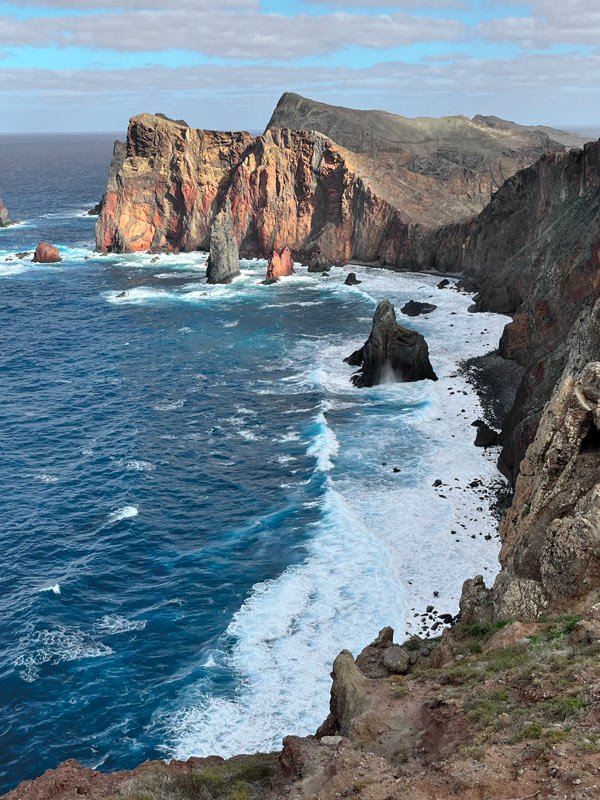
Perched on the eastern tip of Madeira, the Miradouro da Ponta do Rosto offers sensational views of the russet-coloured cliffs of Ponta de São Lourenço. This is another popular spot to watch the sunrise.
DAY 5: A FUN DAY IN FUNCHAL.
Day 5 of your week in Madeira and an opportunity to relax and let your hair down. Here are a few of my suggestions for things to do.
Food and culture walking tour
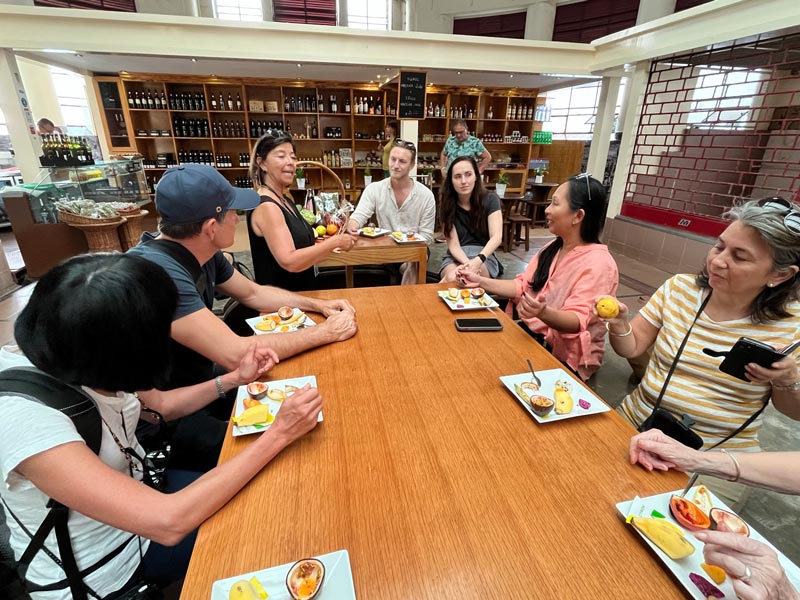
There are few better ways to get to know a country and its culture than through its food. I joined this highly-rated walking tour with a local guide who introduced us to typical Madeiran food and drink whilst weaving in stories of the island.
>>>CLICK HERE FOR MORE INFORMATION
Wine tasting at Blandy’s Wine Lodge
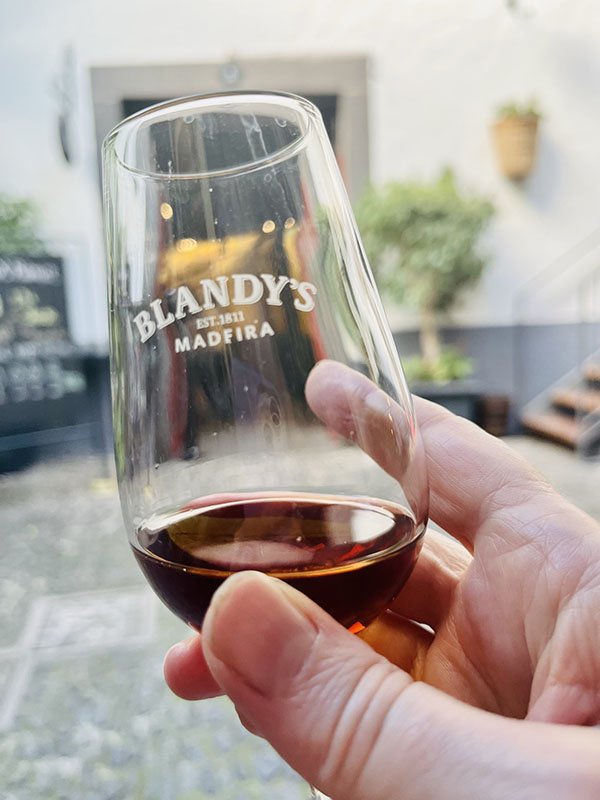
Well. It would be almost rude not to.
Blandy’s Wine Lodge is a Funchal institution and has been distilling wine for seven generations using the traditional canteiro method. You can take a tour of the wine lodge, which ends with a tasting, or simply go for the tasting alone.
Whale and dolphin-watching cruise
Led by a marine biologist, these hugely popular catamaran cruises give you the chance to spot these beautiful mammals in the waters off Funchal.
Although several species can be seen year-round, whales and dolphins are most plentiful between May and September.
>>> CLICK HERE FOR MORE INFORMATION, OR TO FIND OUT ABOUT SUNSET TOURS CLICK HERE.
DAY 6: NUN’S VALLEY (CURRAL DAS FREIRAS)
Madeira’s Valley of the Nuns is an easy and hugely rewarding day trip from Funchal.
A narrow road climbs ten miles along hairpin bends to Curral das Freiras, nestled in a deep canyon. The nuns in question found refuge here in the 16th Century when they fled Santa Clara Convent to escape from pirates.
The village, which is famous for its chestnuts – and all manner of goods made from them – was isolated from the outside world until roads were bored through the mountains in the 20th Century.
Whilst the village is nice enough, it is best seen from the lookout point of Eira do Serrado. The views are sensational.
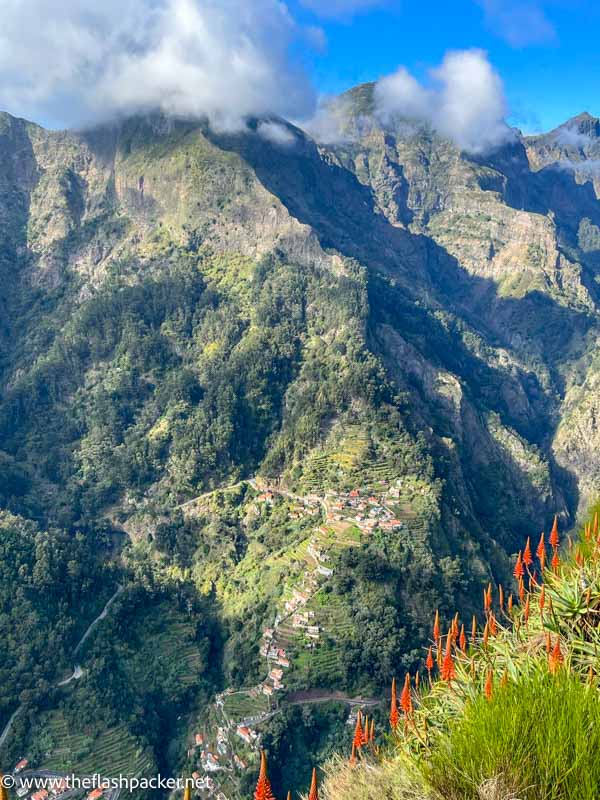
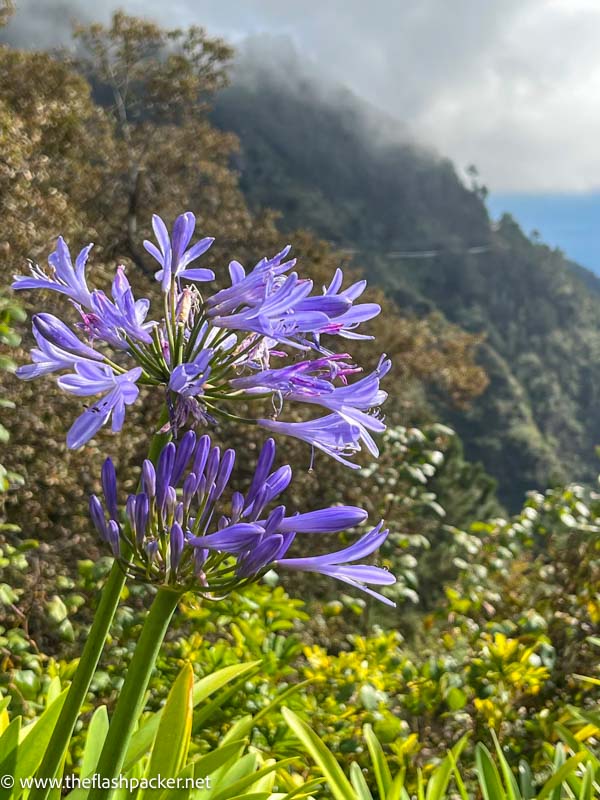
Getting to Nun’s Valley from Funchal
The frequent #81 bus runs between Funchal and Curral das Freiras. Many of the services also stop at Eira do Serrado. You can check the timetable here.
From Eira do Serrado to Curral das Freiras, take the steep downward path into the village, a one-hour walk, or wait for the next bus. There is a hotel and restaurant at Eira do Serrado.
Alternatively, you can take a half-day tour from Funchal. This is a good option if you don’t fancy the walk down to Curral das Freiras – did I mention the sheer drop at one side of the not-that-wide path? – and don’t fancy waiting around for the next bus.
Many of the half-day tours also include a stop at Cãmara de Lobos.
For a memorable and fun day trip to the Nun’s Valley, take a look at this tuk-tuk tour here.
DAY 7: CÃMARA DE LOBOS
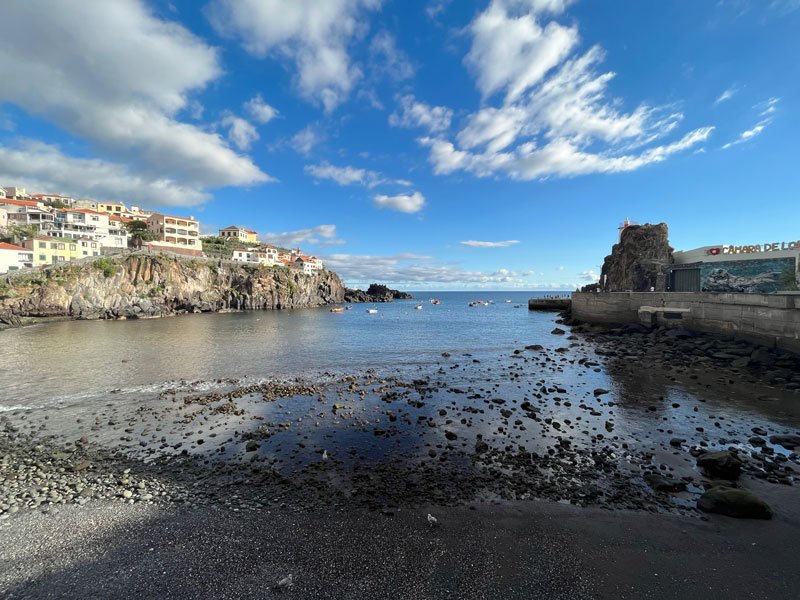
Cãmara de Lobos is one of the easiest day trips from Funchal by bus.
Just five miles west of Funchal, this picturesque fishing town is famous as the place where Winston Churchill liked to set up his easel. Brightly coloured boats bob around its natural harbour and grizzled fishermen play lively card games.
Getting to Cãmara de Lobos
From Funchal, hop on the frequent local #1 bus. This will drop you off at Ponta da Laranjeira from where it is a ten-minute walk to Cãmara de Lobos.
Alternatively, catch one of the many westbound Rodoeste buses that run along Funchal’s Estrada Monumental or Avenida do Mar.
Stretch your legs by walking back some of the way along the seafront promenade that links Cãmara de Lobos with Funchal’s Praia Formosa.
Getting Around Madeira Without a Car
I explored Madeira using public transport and a few day tours.
Bus services in Madeira
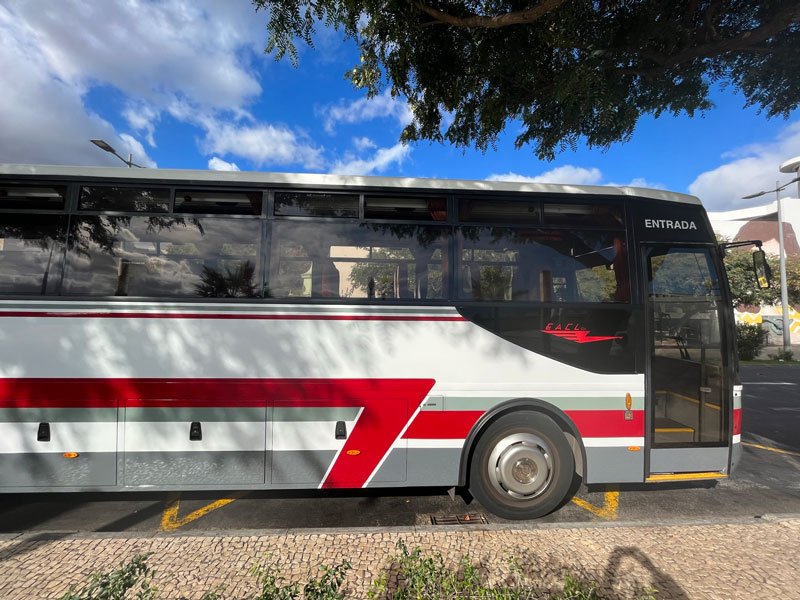
Unlike places like Tenerife or Lanzarote, which are served by just one bus company, on Madeira you have to contend with four different operators. But once you get your head around which company serves which part of the island, it’s not that difficult.
The buses are also helpfully colour-coded.
HORÁRIOS DO FUNCHAL BUS COMPANY
Urban services around Funchal (yellow buses)
Interurban services (yellow and white buses)
These services connect Funchal with places such as Ribeiro Frio, Faial, Santana, São Jorge and Camacha.
These gold and red striped buses serve destinations on the north and west of the island, including Câmara de Lobos, Cabo Girão, Calheta, São Vicente, Porto Moniz and Seixal.
SOCIEDADE DE AUTOMÓVEIS DA MADEIRA (SAM)
These green, yellow and white buses serve the east of the island, from Funchal to the airport and to Caniço, Machico, Caniçal, Porto da Cruz, and Santo da Serra.
EMPRESA DE AUTOMÓVELS DO CANIÇO, LDA (EACL)
These maroon, grey and white buses also serve the east of the island, including Assomada (Portinho), Moinhos (Fontes), Vargem & Garajau and Ponta Da Oliveira.
However, getting around Madeira by bus is far from perfect.
As many of the routes serve commuters, you may find that there are services at the beginning and end of the working hours and little – if anything – in between. There is no public bus service to Pico do Arieiro, a place you must visit.
That said, a local bus will take you to many of the places you want to visit at a very affordable price.
I strongly recommend getting hold of the Madeira Bus and Touring Map before you travel. This excellent map includes detailed information on bus routes across the island and popular services in and around Funchal.
It will be your best Madeira bus travel buddy.
Day tours of Madeira
An organised tour from Funchal can be a godsend.
Some places are impossible to reach by public transport and joining excursions allows you to pack as much into your week as possible. You’ll also benefit from the local knowledge of your guide, and these tours are fabulous opportunities to meet people if you are a solo traveller in Madeira.
These day tours are super affordable. For a full-day tour in 2022, I paid €34 which I consider excellent value. Half-day tours come in at around €20 or so.
Group sizes were small, between 6 and 14. The big coach groups you see around the island are usually shore excursions.
Although I used and can personally recommend Lido Tours, other well-established companies are also available that offer similar itineraries.
Where to Stay in Madeira If You Don’t Have a Car
Funchal is the best base If you are not hiring a car in Madeira. As the island’s capital, it is the main transport hub and there are several tour operators in town.
Many of Funchal’s high-end hotels are clustered on the road heading west out of town. Although these are right on the ocean’s edge and will have fabulous sunset views, it is quite a schlepp into town from here.
To be close to Funchal’s main attractions, I recommend staying east of here, in Funchal Town Centre or the Old Town. Although there are some gorgeous properties in the hills above Funchal, your calf muscles will pay the price for choosing one of these.
Apartamentos Sousa
I stayed in this lovely apartment with sea views on the eastern edge of the Old Town, a ten-minute walk to the cable car station. Spacious, comfortable, very affordable and benefits from a washing machine.
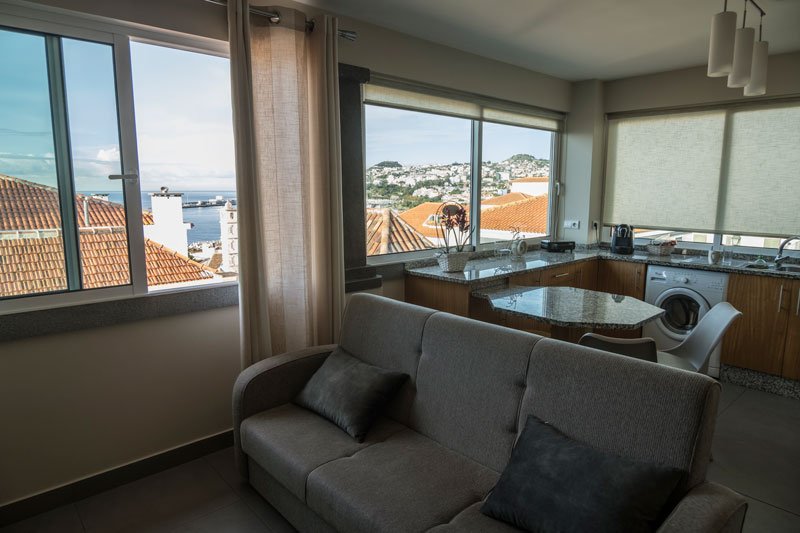
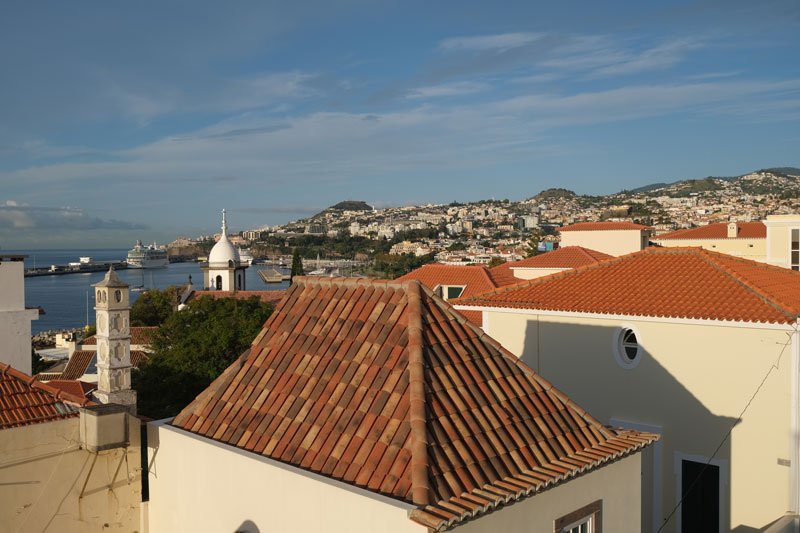
>>> CLICK HERE FOR MORE INFO
Here are a few other places that I have found that may suit other tastes and budgets:
Sé Boutique Hotel
Located a stone’s throw from Funchal’s Cathedral, this chic hotel has a swimming pool and rates include a good breakfast.
>>> CLICK HERE FOR MORE INFO
Castanheiro Boutique Hotel
In an excellent location just off Funchal’s main square, this 4-star hotel has an outdoor pool and hot tub.
>>> CLICK HERE FOR MORE INFO
>>> None of these places take your fancy? Search for other great places to stay in Funchal here.
Where to Eat in Funchal
Eating out in Funchal is a joy. There are plenty of restaurants from which to choose, food quality is generally good and it’s relatively inexpensive.
Here are a few of the places that I tried and liked.
Address: R. Bela São Tiago 5A, 9060-291 Funchal
Don’t be put off by the modest appearance of this place in the Old Town.
This simple café is also a favourite with locals and serves excellent grilled fish. The catches of that day are on a blackboard.
Service can be on the slow side but it’s worth the wait and the staff are very friendly.
Address: Rua de Santa Maria 68, 9060-291 Funchal
Another superb choice in the Old Town where I had the best prawn risotto of my life.
Address: R. da Alfândega, 135, Beco do Açucar 3, 9000-059 Funchal
Housed in a historic building close to the cathedral this cosy restaurant serves authentic food at a reasonable price.
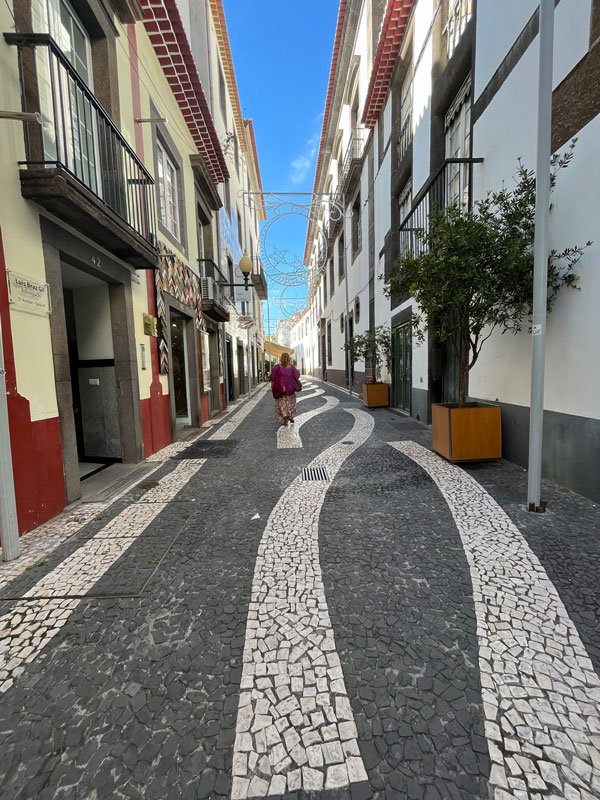
Planning Your Week in Madeira
What is the best month to visit Madeira?
Madeira is a year-round destination.
I visited in November and had wall-to-wall sunshine and temperatures in the low to mid-20s for my entire stay. If you want to see the wildflowers for which Madeira is famous, visit in April and May. The wettest period is between October and January.
The island is busiest during July and August and at the end of December when the crowds – and cruise ships – descend on Funchal to watch the magnificent New Year’s Eve firework display.
Getting there
Madeira Airport (FNC) is the gateway to the island and will be one of the most dramatic landings of your life. Its short runway has mountains on one side and ocean on the other, plus troublesome crosswinds, making it one of Europe’s trickiest landings.
The airport has just one terminal, which is mostly underground.
Getting from Madeira Airport to Funchal
To get from Madeira Airport to Funchal, catch a taxi, book a transfer or take the airport bus.
A taxi from the airport to Funchal will cost anywhere from €30 to €45, depending on the taxi driver and where you are staying in town.
It’s worth taking a look at what a pre-arranged taxi transfer will cost. I booked a taxi transfer via Booking.com.
Shared shuttle transfers are more cost-effective but will increase your transfer time.
The Aerobus leaves the terminal building every hour bound for Funchal. The journey time to Central Funchal is 30 minutes and it costs €6 in 2024. You can check the route, current fares and timetable here.
How to get around Funchal
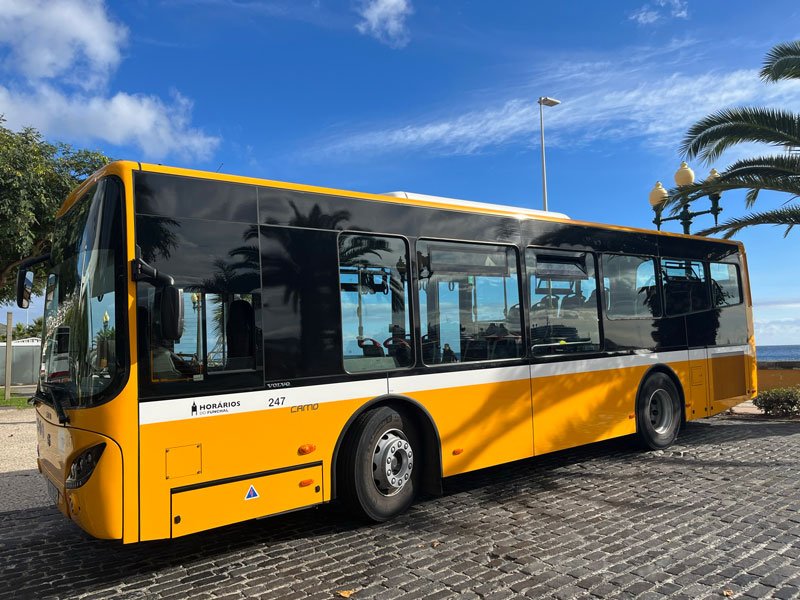
Central Funchal and the Old Town are very walkable. Unless you stay in the hotel zone or in the hills above the city, or choose to take the bus to Monte, you shouldn’t need to use public transport within Funchal.
The cheapest way to use the city’s urban buses is to load credit onto a contactless GIRO card. You can buy these cards and recharge them at one of the GIRO machines – there’s a handy one at the cable car station – or at one of the kiosks.
Get more information on using buses in Funchal, including fares, here.
Is Madeira Safe for Solo Travellers?
Portugal is a fabulous solo travel destination and Madeira is no exception. In my many years of solo travel, it is one of the best places that I have travelled to alone.
It is safe, relatively inexpensive and home to some of the friendliest people on the planet. The climate is wonderful and the landscapes are spectacular.
The biggest risk is the lack of pavements in Funchal’s Old Town.
Even if you are visiting Madeira without a car, the local bus services and abundance of day tours make the island easy to explore. If you are someone who fears solo travel loneliness, these excursions are excellent opportunities to meet other travellers.
But the very best of all, this is one place where it is not unusual to see other solo travellers. You will not be in a tribe of one.
If you don’t relish dining out alone, this is not a big deal. I have never been anywhere where I have seen so many tables for one.
But as with anywhere, don’t make yourself a target and follow these basic travel safety tips. Lock up your valuables at your accommodation and don’t flash your jewels. A little bit of common sense goes a long way.
Final Tips for Visiting Madeira
To make the most of your week in Madeira I’ll leave you a few pearly words of wisdom.
Weather
Madeira is known for its microclimates. When the sun is splitting the palm trees in Funchal, it could be raining five miles to the north.
The weather can change several times a day, particularly if you are moving around the island. I learnt not to trust weather forecasts.
Bring layers
Putting the fickle nature of Madeira’s weather to one side, consider also the altitude of where you will be visiting during the course of the day. On the day I visited Pico do Arieiro, it was 10 degrees outside but with the wind chill it felt a lot colder. I was never so grateful for my down jacket.
50 cents for toilets
Yep. Most public loos need you to deposit 50 cents in a slot to gain entry. Don’t be caught short.
Have a fabulous week in Madeira. If you have found this article helpful, check out my other destination guides to help you plan your vacation:
- Solo Travel in Madeira: The Ultimate Guide
- 35+ Fabulous Things to Do in Funchal, Madeira
- How to Visit Monte Palace Tropical Garden in Madeira
- How to Do a Day Trip to Câmara de Lobos, Madeira from Funchal
- How to Visit the Sensational Valley of the Nuns, Madeira from Funchal
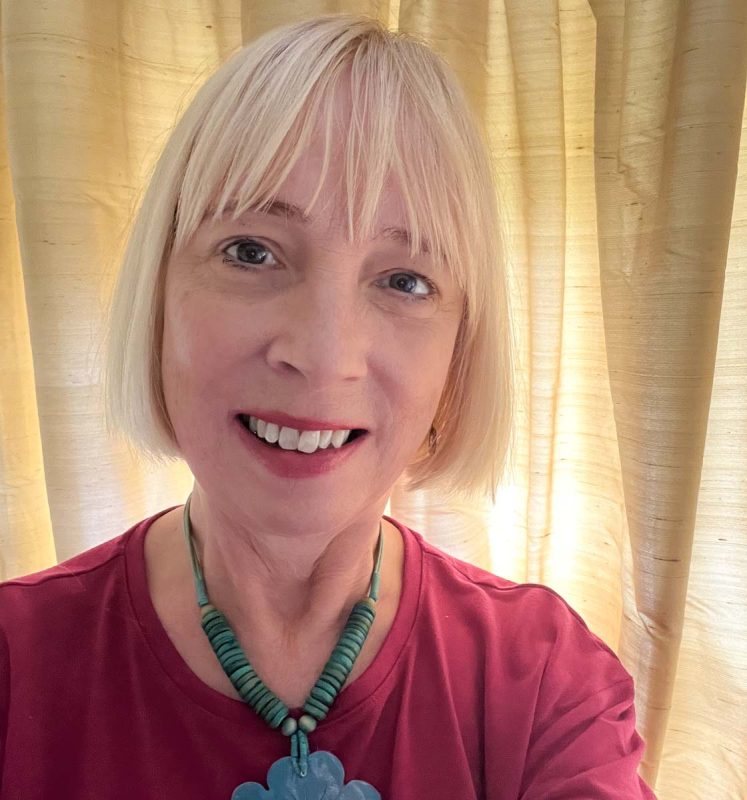
About Bridget
Bridget Coleman has been a passionate traveller for more than 30 years. She has visited 70+ countries, most as a solo traveller.
Articles on this site reflect her first-hand experiences.
To get in touch, email her at hello@theflashpacker.net or follow her on social media.
